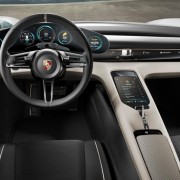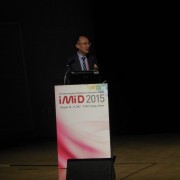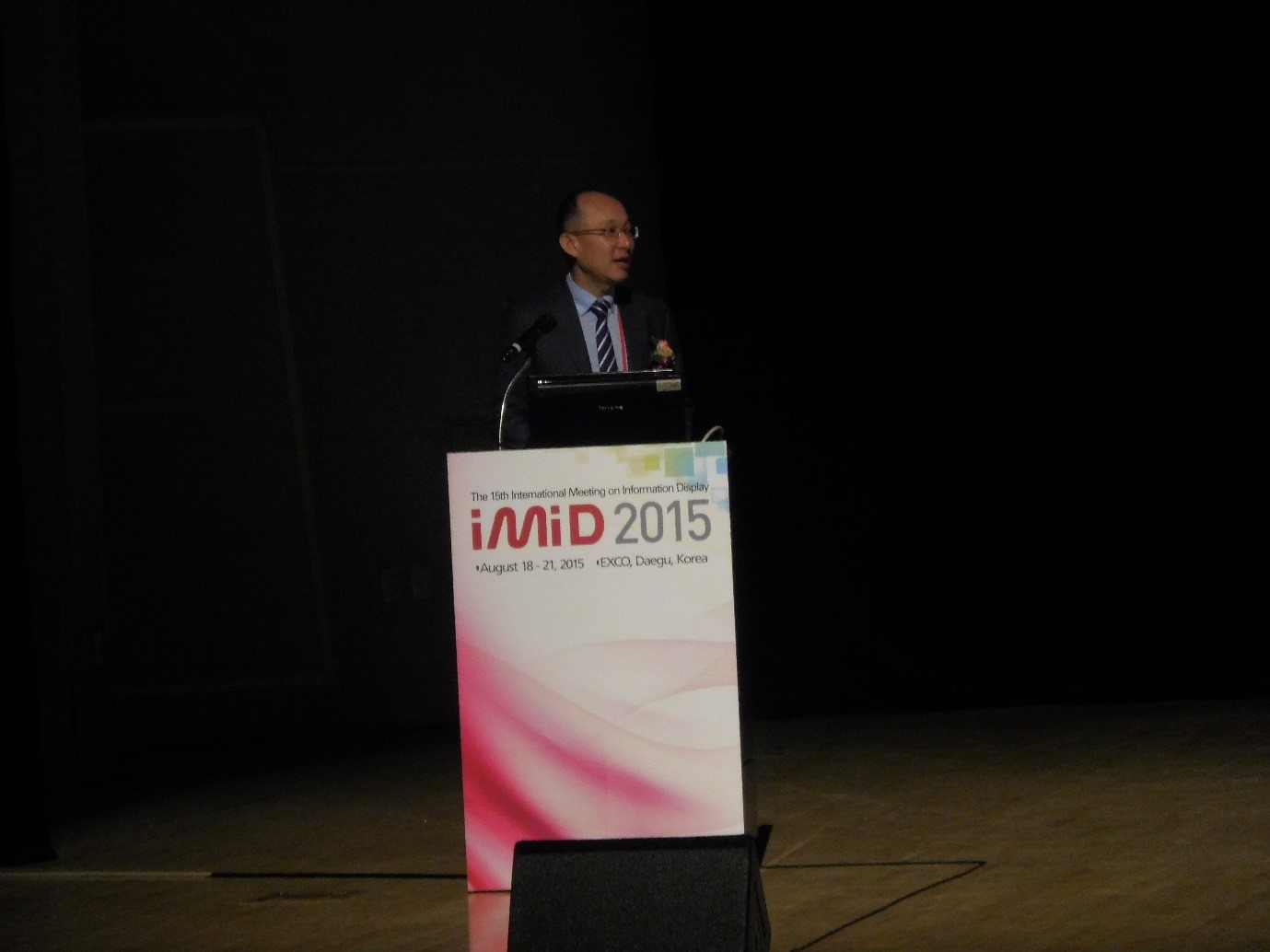[IAA 2015] Audi and Porsche, Propose Future Models of Smart Car
At IAA 2015 (September 17 – 27), Audi and Porsche presented OLED lighting and display equipped vehicles.
In the past, Audi has proved OLED technology’s excellence through diverse models and demonstrations, including introduction of ‘swarm’ in 2013 with its 3D OLED car rear lighting panels. At this motor show, Audi revealed Audi e-tron quattro, the first concept car with Matrix OLED technology. As well as the Matrix OLED lighting, interior OLED display was also applied to the concept car. Audi explained that the Matrix OLED lighting, which was applied to the rear lighting, can continuously change lights and does not cast shadow. Full OLED interface was also applied to the car and all functions required in driving can be control by display touch. Audi revealed that they will gradually apply these technology to next generation Audi series.
Porsche presented their first four-seat electric sports car Mission E as a concept model. The instrument cluster for this concept car is displayed virtually in OLED. The menu can be activated through buttons on the handle. It can also be automatically activated as the cluster’s eye tracking system can perceive the driver’s attention. The display also follows the seat position and body attitude of the driver in what is known as a parallax effect; the display moves according to the driver’s posture for easier viewing. Porsche revealed that Porsche Car Connect technology will also be applied which will allow the user to control key functions of the vehicle through a smartphone.
As OLED using lighting and display are actively applied to smart cars, attention on the automotive OLED is also increasing. At the National Research Development Industry General Workshop, held in July 2015, Samsung Display and LG Display each stated their thoughts on display that will be applied to future smart cars.
Samsung Display’s executive director Hye Yong Chu asserted that smart is display’s future, including smart car. She also explained that for the actualization of smart technology, other ancillary smart technology, such as eye tracking and voice recognition technology, are required.
Yoon Sooyoung, LG Display’s vice president, stated that automotive display can be used for CID, dashboard, cluster, and window, and that the development of transparent and flexible technology is necessary.
During the keynote session of IMID 2015, Munhyun Kim of Hyundai Motors revealed that OLED panels will mainly be applied to smart car compared to LCD as it can easily be flexible. He also added that the automotive OLED’s percentage within the total OLED market will increase, and anticipated that it will exceed 30% in 2017.




